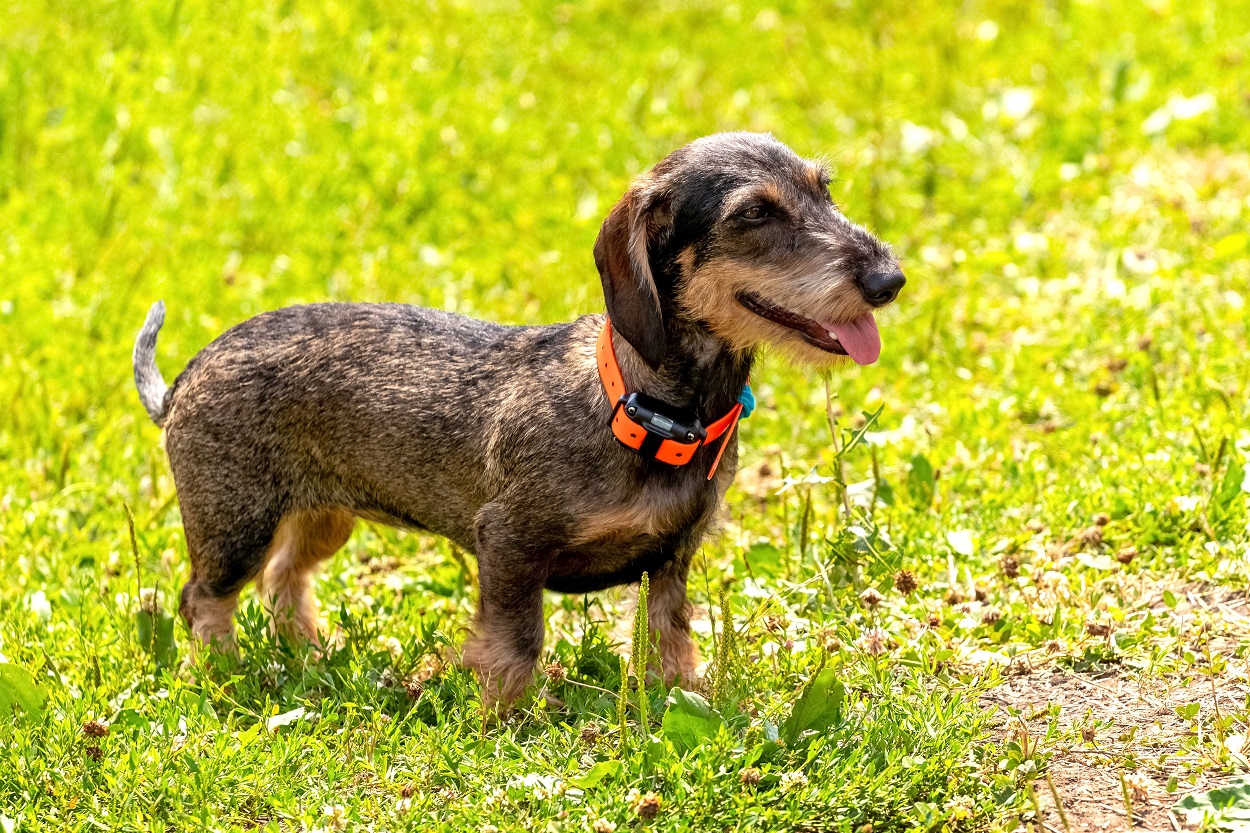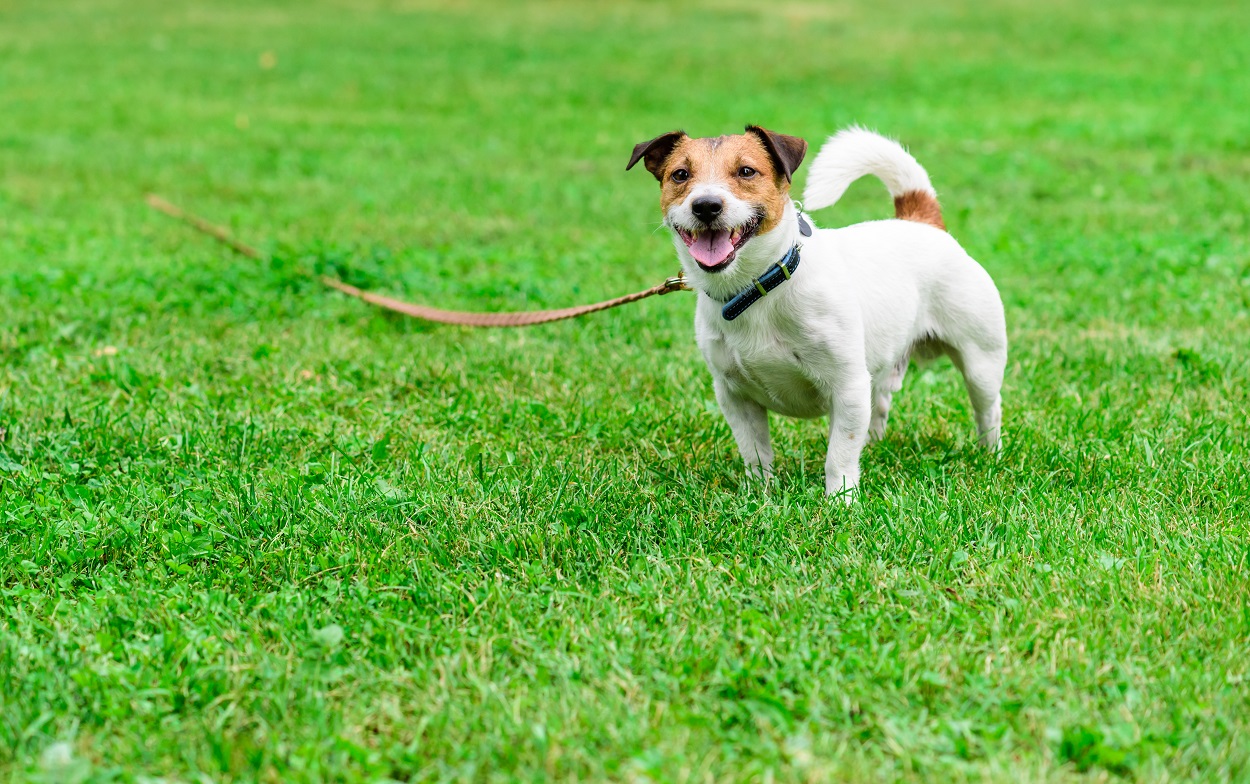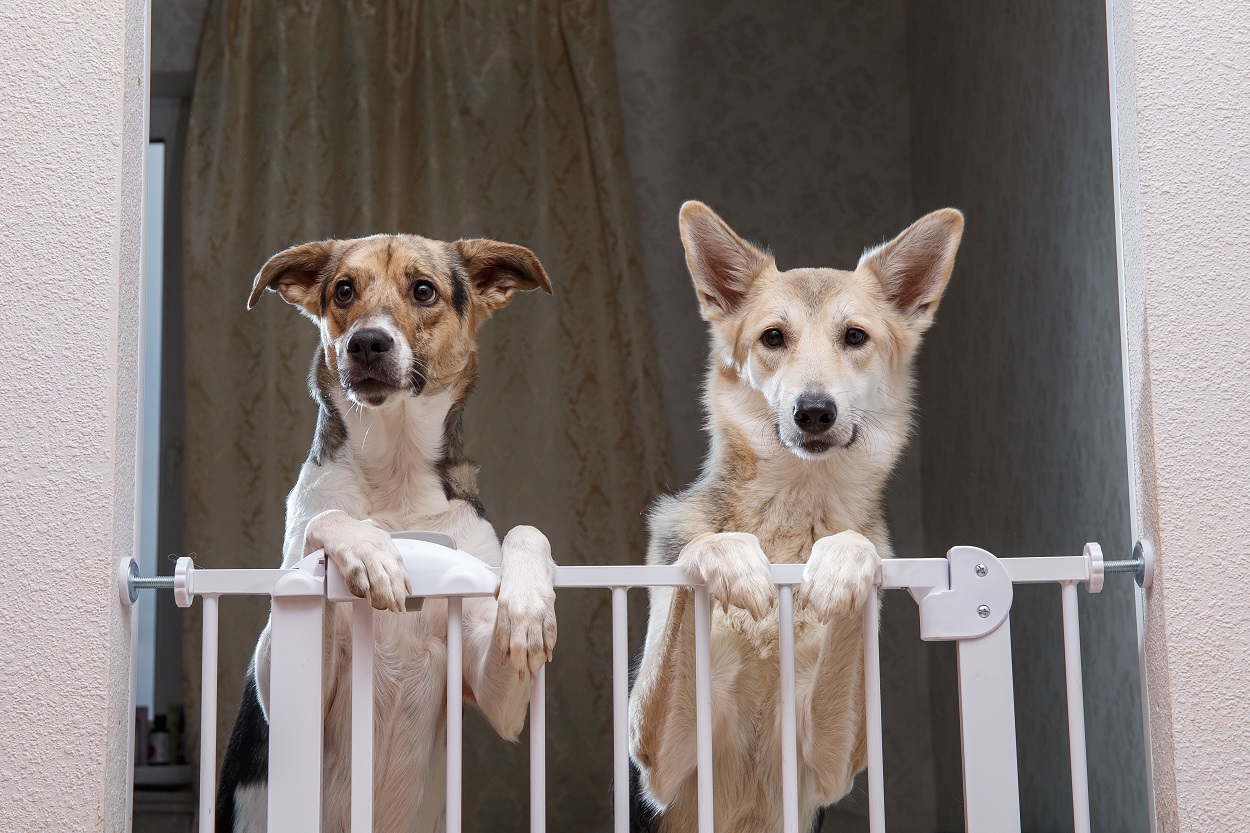While an in-ground dog fence might be one of the best ways to contain your dog in your yard, this might not be practical.
Whether budget or housing regulations prevent you from installing a physical fence or an in-ground dog fence, how else can you keep Fido from breaching the boundaries?
Today’s guide highlights many different ways to keep your dog in the yard without a fence.
6 Best Ways to Keep Your Dog in the Yard Without a Fence
- Boundary training
- Invisible dog fence
- Long line
- Tethers, tie outs, or trollies
- Exercise pen
- DIY fence
1) Boundary training
One option at your disposal if you want to prevent a dog from breaching the boundaries of your yard is to take the time to boundary train the dog. This is the most time-consuming option, and there is no guarantee of success. Like all aspects of dog training, you should pack plenty of patience and use lots of positive reinforcement.
If you execute this method successfully, you will not only make sure your furball doesn’t wander outside the yard, but you’ll also have a well-trained pup for life.
Start by giving your dog a visual cue that demarcates the boundaries of your yard. Use flags, sticks, or lengths of hose to create a physical boundary line. Walk your dog inside the yard on a leash. If he gets close to the boundary line, tug on his leash, call him back and reward him with treats.
Once your furry friend understands where the boundary line is, you can start introducing some distractions into training. Roll a ball so it crosses the boundary line, for instance. Each time your dog doesn’t try to go after the ball, reward him with praise and treats.
This approach may involve weeks of work before your dog fully understands the location and importance of the boundary line. At this point, take the dog off the leash and monitor their behavior. Once you are convinced that they can respect the boundaries, try leaving them unsupervised.
2) Invisible dog fence

An invisible fence, also known as a wireless dog fence, is an electronic device that delivers mild static shock correction if your dog breaches the boundaries.
A wireless fence is much easier to maintain than a physical fence. Additionally, you shouldn’t find your dog digging under one of these fences, and you can find many cost-effective options for far less than you would spend on installing a physical fence.
You will still need to train your dog if you invest in an invisible fence, but the process will not be as laborious or demanding as boundary training without a wireless fence.
3) Long line

A long line is a term used to express any form of tether, rope, or extended leash that affords your dog more latitude and freedom to explore the yard while you can still relax.
In most cases, a long line will be attached to you rather than to a fixed anchor point in the yard – see tethers below for more on this alternative.
A long line gives your dog the chance to explore while remaining inside your property boundaries.
4) Tethers, tie outs, or trollies
A tie out system will involve a chain or rope that tethers your dog in place while still allowing him the freedom to roam. This type of system is only intended for supervised play in the yard. Left unattended, your dog could become tangled up in the chains.
Some tie out system require staking into the ground, while other systems are more flexible, attaching to foliage, trees, or other stable structures in the yard.
These systems offer varying degrees of access to the back yard, so buy according to the needs of the breed.
5) Exercise pen
An exercise pen is one option for securing your dog inside the yard that calls for no training whatsoever.
Exercise pens are simply small, fenced enclosures that can be positioned anywhere in your back yard. While your dog won’t have access to the whole yard, he can still frolic under the sun.
You may find that an exercise pen makes a smart bet for a puppy who doesn’t need too much room to play.
As an added bonus, you can also bring most exercise pens indoors if you need to confine untrained puppies inside the house.
6) DIY fence
Maybe you like the idea of installing a physical fence, but your budget doesn’t stretch to calling in a tradesman.
If you have some basic DIY skills and a few simple tools, you might want to consider building a homemade fence.
Check out this video on making a DIY dog fence to assess whether this is a project within your capabilities.
What Are the Risks of Leaving My Dog Unattended in an Unfenced Yard?

You may have explored the above options and started to wonder whether or not to risk leaving your dog unattended in the back yard. This is inadvisable in most cases.
Remember that dogs are pack animals. They do not tend to thrive when left outdoors alone. Most dogs want to bond with their families. Extended periods of isolation for dogs can trigger boredom and loneliness. In some cases, a dog spending too much time alone could experience anxiety and also exhibit destructive behaviors.
Even if you need to leave your dog outside unattended for brief periods, always monitor their activities if the yard is unsecured.
Here are the main reasons why you should make sure you have a fence or suitable alternative – see above – rather than leaving your pooch unattended in the yard:
- To stop your dog from biting people: Even if your dog is typically friendly with people, all dogs can act out of character on occasion. Many children and adults are unaware of how to deal with dogs. They may unwittingly push a puppy or an untrained dog to the point at which they bite. If your dog bites someone, they may call animal control, and legal issues can stem from a dog biting and injuring someone. This issue alone means it is worth taking some form of action to ensure that your dog doesn’t bite a passerby.
- To prevent your dog from getting hit by a car: If your dog runs outside the yard and into the street, they could easily be hit by a car. This is every pet parent’s worst nightmare, but it is fortunately avoidable. Whether you build a cheap DIY fence, experiment with a wireless dog fence, or put the time into training your pooch to respect boundaries, you need to do everything you can to keep your dog safe at home.
- To comply with local laws and ordinances: It may be illegal for dogs to roam freely, depending on where you live. Failing to comply with local laws could lead to a fine or the confiscation of your dog. Check up on local regulations to make sure you are not exposing your dog to any danger if he breaches the boundaries.
- To eliminate issues with other dogs: One of the main risks of leaving a dog in an unattended yard is that they escape and end up fighting with other dogs. Dogs are fiercely territorial and many small breed will not back down when faced with a bigger dog in the street. If your pup ends of fighting with another dog and injuring them, this could trigger legal repercussions and expenses. Beyond this, your dog could sustain injuries in a fight. In the worst scenario, your furry friend could even die at the hands of a larger opponent. Don’t take the chance when there are so many options for securing your dog.
- Your dog could be stolen: Dognapping is regrettably commonplace. If you leave your dog outside unattended – especially if you have a desirable and expensive breed – this will expose him to the risk of being stolen by unsavory individuals. Instead, choose one of the suggestions above and do your part to ensure that Fido doesn’t escape or get stolen.
- To stop your dog from eating something bad: Leaving your dog to roam the neighborhood after escaping the back yard means he could eat something he shouldn’t.
Conclusion
We hope today’s brief guide has showed you how you can keep your dog safe without needing to build a physical fence.
Whatever method you choose, make sure the boundaries of your property are secured if you have a dog at home and a yard in which he roams.
Take a moment to bookmark GO Boxer Rescue before you head off today and pop back soon for more tips on buying the best equipment for your pooch and more guides on all aspects of pet parenthood. See you soon!
